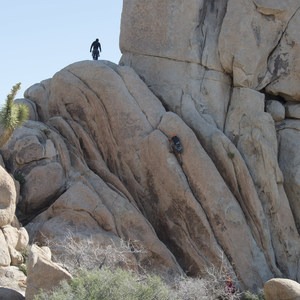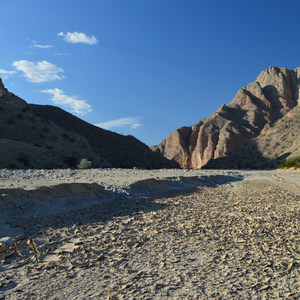You are here
Stunning sunsets, unusual rock formations, shocking variations in color, bright stars in the night sky, and vibrant waves of wildflowers that bloom every spring...California’s desert parks are breathtaking despite their stark and desolate nature.
Joshua Tree, Anza-Borrego, and Death Valley are a few of these iconic desert destinations that draw thousands, if not millions, of visitors each year. For those of us who love the beauty of the desert, it seems like a no-brainer that these areas should be preserved and protected. If it wasn’t for one women who decided to fight for these desert places almost a hundred years ago, however, the parks that we enjoy today probably never would have existed.
Minerva Hamilton Hoyt was an unlikely hero of these wild, unruly deserts. Born into a pampered and privileged Southern family on March 27, 1866, she grew up as a socialite before marrying a New York based surgeon. As newlyweds, the two moved to Pasadena in the 1890s, where Hoyt became interested in gardening and the natural landscape of Southern California.
Like many of us who find rejuvenation and healing in nature, Hoyt began to spend time in the southwest’s deserts. After losing an infant son, and later, her husband in 1918, these stark and somewhat lonely landscapes became places of solace for her.
Meanwhile, the advent of the personal automobile around this time made remote, rugged areas of the American West more accessible than ever before. One such area, called the Devil’s Garden, was literally loved to death. Cactus gardens were all the rage during Hoyt’s early years in the L.A. area, and rare and wild desert plants were dug up and transplanted to city gardens. Today, the Devil’s Garden is occupied primarily by wind turbines and highways.
Hoyt was personally horrified by what she witnessed happen to the desert and this one area in particular. She began advocating that these places should be protected as parks in the 1920s. As the Conservation Chair of the California chapter of the Garden Club, she arranged for impressive desert displays to be sent back east and overseas to generate more interest in the Southwest’s flowers and cacti.
In 1930, she founded the International Desert Conservation League and worked with the president of Mexico to create a 10,000-acre cactus reserve near Tehuacan. Her immediate success in the field of desert conservation was promising, but working domestically with President Hoover proved to be more of a challenge.
While Hoover established Death Valley as a National Monument as well as Saguaro National Monument in 1933, he put Hoyt off again and again in her efforts to establish what she wanted to call the Desert Plants National Park.
She packed her passion and ferocity behind a socialite’s demeanor, however, and was relentless in her fight to conserve the desert landscapes. She redoubled her efforts on Franklin D. Roosevelt, Hoover’s successor, and his Secretary of the Interior, Harold Ickes. In 1936, FDR designated the Joshua Tree National Monument. While it was significantly larger than today’s national park due to the fact that many lands that were withdrawn for mining during WWII have yet to be restored, her efforts ensured that the unusual plants and rocks of this park are still enjoyed by outdoor enthusiasts today.
Hoyt is remembered today as the woman who was almost single handedly responsible for the preservation of desert landscapes in Death Valley National Park, Anza-Borrego Desert State Park, and Joshua Tree National Park. Her legacy of conservation lives on as long as those of us invested in the wild, remote beauty of the desert enjoy and protect the places where we play.








Comments
Sign In and share them.